What’s on my tongue?
Bumps, patches and spots in your mouth can be harmless. But sometimes, they can give clues to what’s going on with your overall health.
Find out what your tongue is telling you and when you should see your doctor or dentist.
White patches
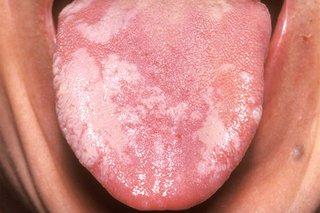
Creamy white spots could be a fungal infection which happens when an illness or medication disturb the balance of bacteria in your mouth. White patches that are lacy could be lichen planus, which occurs if your immune system is attacking the tissues in the mouth. Hard white lesions that can’t be scraped away could be leukoplakia, which is linked to cancer.
“Hair” on your tongue

If the tongue is coated by black, brown or white fur, it is called hairy tongue. The normal, small bumps grow into longer hair like strands, where food and bacteria get caught. These hairy patches can’t be scraped off with a tongue scraper. It is also called “Oral Hairy Leukoplakia”. It occurs in people infected with viruses like Epstein-Barr virus or HIV.
Black tongue

Hairy tongue can be black in colour. Tongue can also turn black when medication with bismuth is taken. Bismuth stains the tongue black when it mixes with saliva. It is harmless and disappears when the medication is stopped.
Bright red tongue
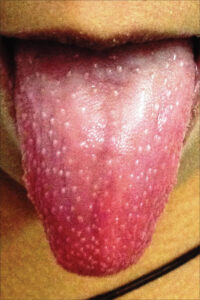
It is also called “Strawberry tongue”. It is a symptom of scarlet fever. If the tongue is red, smooth and has no pain, it might be a sign of Vitamin B3 deficiency.
Burning sensation on the tongue

The tongue feels like scalded with hot coffee and tastes metallic or bitter, it is called “Burning mouth syndrome”. It is a symptom of nervous disturbance of the tongue. It is also caused by some health disturbances, dry mouth, infections, acid reflux, diabetes, etc. Sometimes acidic foods, tooth paste, mouth washes, candy or gum can also cause burning sensation in the mouth.
Smooth tongue
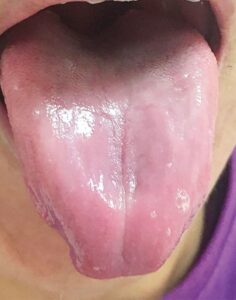
The tongue is de-papillated(loss of papilla/taste buds) and looks smooth and glossy red. It is a sign of nutritional deficiency like iron, folic acid, B-complex vitamins. It also occurs in certain infections, celiac disease, certain medications.
Geographic tongue
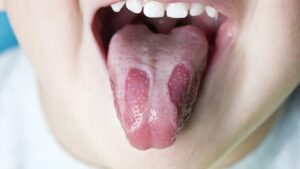
There are patches of smooth, red areas on the tongue with rest of the tongue surface looking normal. These patches often disappear and re-appear, there may be pain or burning sensation over these areas. It is often harmless, but sometimes linked to psoriasis or lichen planus.
Bumps

A single painful bump at the tip of the tongue could be transient lingual papillitis, also called “lie bumps” which can pop up due to irritation on the tongue. A virus can also cause little bumps on the tongue mostly on the tip and sides. A lump on or under the tongue that is painful and doesn’t go awy, it could be linked to oral cancer.
Macroglossia

The tongue is too big in proportion compared to the rest of the mouth. It takes a lot of space in the mouth and imprints of teeth are found on the sides of the tongue. This can be a sign of an underlying condition like hypothyroidism,an infection, or allergies.
Fissured tongue
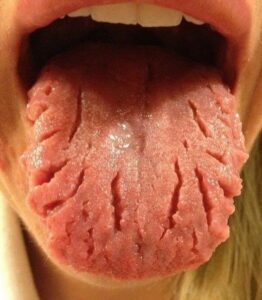
Deep grooves are present o the tongue. It is linked to Down’s syndrome, psoriasis and Sjogren’s syndrome. They are harmless but care should be taken to gently brush the tongue to clear food and bacteria.
Signs of Oral cancer
Many spots, bumps, colors on the tongue are harmless. Lesions like ulcers or sores that heal within a week to 10 days are generally harmless. Any ulcers, lumps, sores, pain, trouble chewing or swallowing that last more than 2 weeks could be linked to oral cancer and should be checked by your dentist.